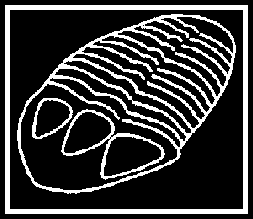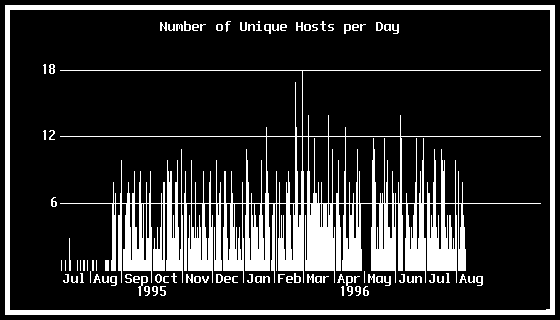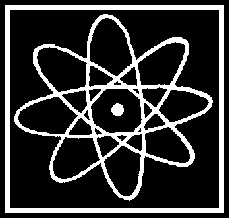To go to the Table of Contents

LOGICAL ANALYSIS AND OTHER TERMS AND CONCEPTS
You need to know the meaning of the following terms, definitions, and
concepts.
In many cases, the explanation given here is brief. Part of your
assignment
in this course is to use your textbook and the WorldWide Web to
supplement
these definitions to the point that you understand them conceptually.
The Scientific Method and Logical Analysis
Technical Writing papers as well as papers in most fields of
research
use the scientific method as an organizing medium--going from problem
to
tentative solution to researched data to a supported conclusion and
speculation
about applications of the solution. Logical Analysis in science uses
the
Scientific Method as a means of discovering and validating information.
The Scientific Method follows these steps:
-
Selection of a Problem to be
solved;
-
Preliminary research on the
problem;
-
Development of a Hypothesis--a
tentative
solution or projected conclusion;
-
In-depth research;
-
Proving or disproving the hypothesis;
-
If the hypothesis is disproven, the selection of a new hypothesis;
-
If the hypothesis is proven, then the problem has been solved and the
solution
must be made available to others in the field through publication; Others
in the field validate the solution through repetition of the experiment
or examination of the research data, which must be made available by
the
researcher (often in the published article). Then, the hypothesis has
grown
to the status of a conclusion; if the problem area it covers is large
enough,
this conclusion may become a theory (such as the theory of relativity)
or may become law (such as the law of gravitation). Because hypotheses,
theories, and laws are based on specific data, it is possible that new
data or new analysis of old data (through a new hypothesis) could
invalidate
them. For an interesting discussion of how scientific change comes
about
over time through new hypotheses, read Thomas Kuhn's book The
Structure
of Scientific Revolutions.
Induction, Deduction, and Categorical
Syllogisms
Within the Scientific Method, two type of logical reasoning are
used:
Inductive
Reasoning and Deductive Reasoning.
-
Induction is a form of reasoning that
examines
many specific instances or examples or experiments until a definite
pattern is seen in all of them; from that recognition of a pattern, a
hypothesis or even a conclusion may be reached. Modern
science
is based on Inductive reasoning; any conclusion must have plenty of
supporting
evidence.
If one finds that the growth of a certain bacteria is retarded by a
certain
fungus, that is a one-time observation; however, if one finds that each
time the experiment is tried, the fungus retards the growth of the
bacteria,
one can reach the hypothesis that Fungus X retards the growth of
Bacteria
Z. That hypothesis has been reached Inductively because it used
several
instances of the phenomenon in question and each instance seemed to
support
the same hypothesis.
- Deduction takes the conclusions or
generalizations
reached through inductive reasoning and applies them to a new
specific
case. Thus, Deduction allows one to reach a conclusion about the
new
case without examining the new case. Learning through experience is one
example of deductive reasoning. If one has become ill several times
after
eating a certain food, one may then avoid that food, feeling that one
does
not have to eat it each time to see if it will make one ill again. That
is a case of deductive reasoning:
Food X makes me ill. This dish contains
Food X. Therefore, it will make me ill. I will not eat it.
This type of application can best be seen through a device of reasoning
called a Categorical Syllogism, which
is an example of Deductive Reasoning:
-
Major Premise: All humans are mortal
(a generalization or hypothesis reached through inductive reasoning)
-
Minor Premise: Socrates is a human
(the
new specific case, the man Socrates)
-
Conclusion: Socrates is mortal (because
if all things in the class or category of humans are mortal, and
Socrates
must be placed in the class of humans, then Socrates must be a member
of
that class; therefore, he is mortal, because all members of that class
are mortal)
The conclusion of the categorical syllogism may be either Valid
or Invalid;
it is valid if it is the only conclusion that follows
from
the major and minor premises. For instance, if we said that
-
All humans are mortal
-
Socrates is mortal
-
Socrates is a human
that conclusion would be invalid. From those two premises, we could
conclude
that Socrates either is or is not a human; neither premise says that
Socrates
is a human. Instead, they say that Socrates is mortal, which does
not
mean that he is human; we know that the class of mortal things is
larger
than the class of human things because it includes all humans and
everything else that must die.
Also, one must consider the Truth
of the conclusion. If the conclusion accords with
reality,
it can be said to be true. In the case of the above syllogism, which is
not valid, the conclusion is true--because the historical
figure
Socrates was a human, one of the race of them inhabiting the planet
Earth.
But, premises do not create truth, and the syllogism is a way of
testing
only whether one is drawing valid conclusions--not necessarily
true ones. A syllogism may be valid and yet its conclusion may not
be true; on the other hand, the premises may be false but the
conclusion
could be true. However, if the premises are true and the conclusion is
valid, the conclusion should also be true. Only in that form is
the categorical syllogism trustworthy so far as truth is concerned.
Graphics
The following section contains information on the following
graphics-related
topics:
-
Propositional Knowledge
-
Simultaneous and Successive Presentation
of Information
-
Graphics that Represent Objects,
Abstractions,
and Relationships, with an example of
each:
-
The Numbering and Reference to Graphics
in the Text
Propositional Knowledge:
First of all, graphics can be view as carrying information, just as
various
other non-verbal forms of communication carry information--dance,
music,
art, animal languages, etc. Basically, then, there is a message or
information
which can be conveyed in various forms, including graphics. This
information
we can call Propositional Knowledge, meaning that the user has
information
or knowledge to be conveyed by some form of communication--in this case
graphically. The information might also be conveyed in other forms,
such
as a painting, an opera, or by body language. If we then can assume
that
information is in packets, to be expressed by various communication
systems,
then we can assume that graphics are also made up of propositions.
Simultaneous and Successive
Presentation
of Information: Propositions can be expressed singly
or in groups. When language expresses a proposition, it does so
in a Sequential or Successive fashion--through words,
combination
of words into sentences, combinations of sentences into paragraphs, and
combinations of paragraphs into whole sections or whole compositions.
But,
to get the full meaning, the whole piece must be read through from
beginning
to end--Successively. So, propositions can be presented one at
at
time but not several at the same time (of course, in the reader's mind,
propositions can be combined and new meanings derived.
Graphics are
able to present several propositions at the same time--Simultaneously.
The benefit of a graphic is that it can embed or combine many pieces of
information that the reader can see all at the same time. Of further
benefit,
the reader can see if the combination of propositions yields any new
information
that can be seen only in the combination of the data or propositions.
Such
things as stock market predictions are based on such combinations of
data
viewed simultaneously.
The graphics themselves can be classed as three types:
Graphics
that represent Objects,
Abstractions,
and Relationships:
-
Those that represent Objects,
informing the reader about the real-world appearance and layout of
physical
things. Photographs and illustrations are two common forms of graphics
representing objects.
- Those that represent Relationships,
showing the reader how two propositions or kinds of information
interact
with each other. Bar charts and line graphs are two common forms of
graphics
representing relationships.
- Those that represent Abstractions.
This type of graphic can sometimes be thought of as a data-model. Data
can be gathered about things that cannot be literally seen as
real-world
objects because of their size or inaccessibility. Information about
microscopic
entities in living cells or information gathered about atomic structure
are two such areas. The data that is gathered about such areas can then
be assembled into a data model, which pictures the projected
relationship
of propositions gathered by research or done partly through educated
speculation.
The structure of DNA and the early models of the atom are two such
Abstractions.
The following graphics show these three types:
Graphic Showing an Object:
Figure 1
Trilobite


Graphic Showing a Relationship
Between Two Quantities:
Figure 2
Unique Hosts Per Day

Source: http://shark/gsfc.nasa.gov/TOOLS
/usage_plots.pl/h/804556800/804556800

Graphic showing an Abstraction:
Figure 3
Early Model of the Atom


The Numbering and Reference to Graphics in the
Text:
Graphics should be numbered and have titles, both given above the
graphic
itself. An example is given in the examples of the Long Report (listed
in the Table of Contents). Also, graphics
must
be mentioned in the report before the reader encounters the graphic
itself.
This reference should be phrased like the following: "As can be seen in
Figure 7, the recent increase in rainfall in Louisiana has given a
quantum
leap in mushroom growth." Do not use this pattern: "The recent increase
in rainfall in Louisiana has increased mushroom growth (Fig. 7)." This
last example makes it appear as if the Figure is unnecessary or
unimportant.
Other Terms and Concepts You Need to Know
These other terms and concepts are explained either in the English
303
on Internet material or are covered in the textbook. If you have
questions,
please come by my office, telephone, or e-mail.
-
Technical Writing Audiences: (supplement this brief material
with
the information from your textbook)
-
Expert:
A reader
(or writer) having an advanced degree or a great deal of experience in
the subject field. Experts tend to do their own writing because only
they
have sufficient understanding of the subject. When experts write for
other
experts, for expert-level audiences, they tend to use the jargon or
language
of their field, as a kind of shorthand, making the writing difficult
for
non-experts to understand.
- Technician:
A
technician may not have an advanced degree in the subject field;
however,
the technician audience is best defined by the interest of the
technician.
The technician is primarily interested in practical applications in the
field rather than being interested primarily in theory about the field.
Thus, a technician might install computers as a technician; a computer
scientist, an expert, might design the structure of future computer
designs.
On the job, the technician may read or write highly developed and
complex
manuals covering complex equipment such as telephone switching
equipment.
These manuals would be for use in-house, rather than being written for
laymen.
- Layman or General
Reader:
The layman is best defined as anyone who does not have an
advanced
degree in the subject field and who does not work in the field as a
technician.
The Layman reads for information. The layman may develop specialized
interests
in field and may read for theory or practical applications in some
particular
area. Computer manuals are good examples of layman-oriented writing,
writing
designed to bring the layman up to a technician level in using, for
instance,
some particular wordprocessing program. Layman with specialized
interests
or needs are a one of the largest audiences for technical writing.
- Executive: The
executive audience is a specialized one; the executive has to make
business
or organizational decisions based on the recommendations of others. The
executive is thus most interested in the conclusions and
recommendations
included in reports and studies. The executive may know little about
the
subject material of a report and may have to trust the people who
research,
analyze, and write the reports and papers to offer reliable conclusions
and recommendations. For example, the chief officer of a large company
such as Sony would be called on to make decisions about a wide range of
products and markets; most likely, this officer would have to depend on
material developed by others to help in those decisions.
-
Types of Abstracts:
-
Informative: An
informative abstract uses, as much as possible, the language of the
original
document and gives information, in rough proportion to the original,
about
the entire document being abstracted. The informative abstract is a
shortened
version of the original, sounding like the original document but in a
much
briefer form. The informative abstract may say, "The problem of the
unit's
electrical supply needs to be given the full attention of the company."
- Descriptive: The
descriptive abstract is what used to be called a summary: it is a
shortened
version of the original that is in the language of the person doing the
abstracting rather than in the language of the original document. The
descriptive
abstract is the abstracter discussing the original document rather than
reproducing it in a short form. The Descriptive Abstract may say, "In
this
paper, the author discusses the problem of the electrical supply."
-
White Space
-
Formatting
-
Technical Writing Audiences
-
Headings and Heading Theory
-
Memorandum Form and Letter Form [your proposal is in Memorandum form]
-
Methods of text organization [such as chronological and spatial; the
textbook
has several sections on organization of texts and paragraphs]
-
Information about paper types, such processes and instructions
-
Grammar:
-
Mood
-
Tense
-
Voice
-
Simple Sentence
-
Complex Sentence
-
Compound Sentence
-
Definition of a Clause
-
Definition of a Phrase
-
Definition of a Sentence in Terms of Clauses
This list in not intended to be all-inclusive. If you have questions
about what you need to know or need clarification of terms,
definitions,
or concepts, call, e-mail, or come by my office.
You may find the following resource useful for for research
and
exploring terms and concepts in technical writing and in English:
Resources for the Study of Language,
Literature,
and Composition
This listing can also be accessed through the Table of
Contents.
To go to the top of this page
To go to the Table of Contents







